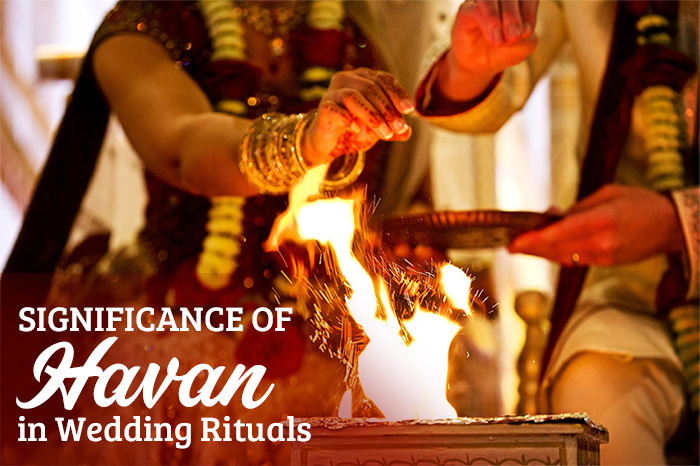Hinduism comes with many age-old rituals and customs which our sages practiced. All these rituals came with logical reasoning. Over time though the rituals were followed per the scriptures, people forgot the significance behind them. In modern times, thanks to the spread of the internet and matrimonial websites, articles and blogs are being posted to re-educate people to the meaning behind every important Hindu matrimonial ritual. This article will help us understand the significance of ‘havan’ (also known as ‘homa’) in Hindu matrimonial rituals.
‘Havan’/’Homa’ is a sacrificial fire ritual. It is derived from the Sanskrit root ‘hu’; which means to consume. To Hindus, fire (Agni) symbolizes purity, as it consumes the old and paves the way for a new creation, as an interface between the material world and spiritual world. The ‘Havan’ is performed in a square-shaped ‘kunda’ or a bilaterally symmetrical alter, which is meant to combine the vertical element of fire with the horizontal elements of water and earth. The ‘kunda’ is usually made of copper/stone/brick, constructed specially for ‘havan’ and then deconstructed. The offerings made are symbolized as masculine and feminine; for example – ghee (symbolizing the masculine sperm) and the ladle from which it is poured is in shape of yoni (or primitive feminine symbol).
The Hindu matrimonial ceremony is one of the most sacred religious rites. During this ceremony, the ‘Vivaha Havan’ is performed to create an air of divinity and purity. Keeping Agni as the witness, the Indian Bride and Indian Groom exchange their sacred vows to each other, to the Gods and solemnize their matrimonial rituals. The Indian Bride and Indian Groom sit in front of the fire alter, facing the East while the priest sits North, facing South. The groom and the bride hold hands, make offerings into the sacrificial fire, chant the holy hymns, and take the symbolic seven steps (‘Sapta Padhi’) all around the ‘Vivaha Havan.’ The holy hymns or ‘Shlokas’ (as they are known), end with the uttering of the word ‘Swaha’; which means the sacrifice of ego to the fire. During ancient times, more elaborate sacrifices were made, but now we make ritualistic sacrifice/offerings such as curd, sugar, incense, herbs, milk, petals, grains, coconut, etc. Given the significance of the ‘Vivaha Havan’ in the Hindu matrimony, the offerings must be sacred and a logical purpose to explain their usage. Below is a list of some of the most commonly-used items and their purpose:
1) Ghee – meant to purify the sacrificial fumes; symbolizes burning of ego and purifying the heart;
2) Sandalwood/Camphor – meant to purify and perfume the sacrificial fumes; symbolizes burning of ego;
3) Mango leaves and twigs – Formic Aldehyde is released through the sacrificial fumes to kill bacteria in surrounding air; symbolizing purification;
4) Jaggery (Gur) – Formic Aldehyde is released through the sacrificial fumes to kill bacteria in surrounding air; symbolizing purification and sweetening the air;
5) Turmeric (Haldi) – Its antiseptic properties disinfects the air;
6) Dhoop (Incense Sticks) – to release sweet aroma into the air; symbolizing health and prosperity;
7) Gangajal (Water of Holy River Ganges) – water is spread around the ‘Havan Kund’ to purify the surroundings and to stop the fire from spreading.
8) Lamp (diya) represents the goddess Laxmi who blesses the couple with prosperity.

